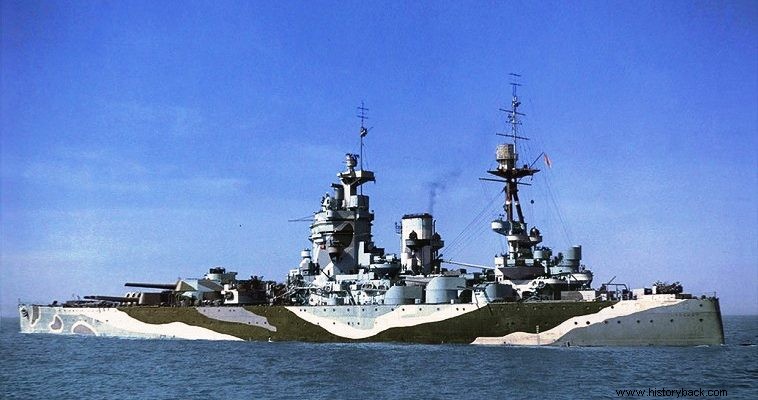
HMS Rodney was the second and last battleship of the Nelson class. The ship entered service in 1928. It was designed under the limitations of the Washington Naval Armaments Treaty. She served well in World War II, taking part in the naval engagements in Norwegian waters and the sinking of the German battleship Bismarck. He participated in the Battle of the Atlantic escorting convoys.
He also participated in the landing operations of the Allies in Morocco and Tunisia and then in the landing in Sicily and Normandy. Her last war mission was escorting a convoy to the Soviet Union in late 1944. She was decommissioned in late 1945 and scrapped in 1948. Nelson and Rodney epitomized British shipbuilding technology of their day, incorporating all the lessons learned of World War I and laying the foundations for further developments.
She had a full displacement of 38,030 tons, a length of 216 m, a beam of 32.3 m, and a draft of 9.2 m. To limit her displacement to the requirements of the Washington Treaty, it was decided not to discount armor and armament, but to propulsion system. So the boat was equipped with 45,000 HP engines that gave it a maximum speed of only 23 knots. This was his only drawback.
The vessel had a range of 13,000 km at a speed of 16 knots and a crew of 1,314 men. She was armed with 9 16in (406 mm) guns in three triple turrets, all mounted in the forward half of the ship, again for reasons of economy of displacement. It also had 12 152mm guns. in six twin turrets, 6 heavy 120mm anti-aircraft guns, number of 40mm anti-aircraft pom-poms,. and two 622 mm torpedo tubes
The ship was armored according to the All or Nothing doctrine, with very heavy armor on the vital parts of the ship and less or none on the rest. Rodney's battleship belt was 330-356 mm thick. and could withstand a hit from up to a 16in gun under ideal conditions. The armored deck carried armor up to 159 mm thick. while the bases of the towers and the ammunition depots had armor of a maximum thickness of 381 mm. The main gun turrets had a maximum armor thickness of 406 mm. while the armored combat control center had a maximum armor thickness of 56 mm. Finally, the anti-damage armor had a thickness of 102-305 mm.
Pantelis D. Karikas
